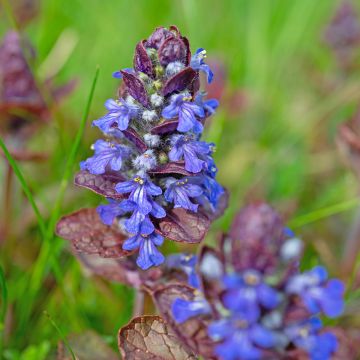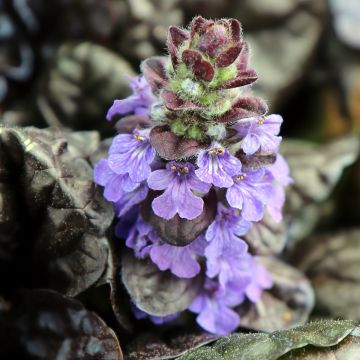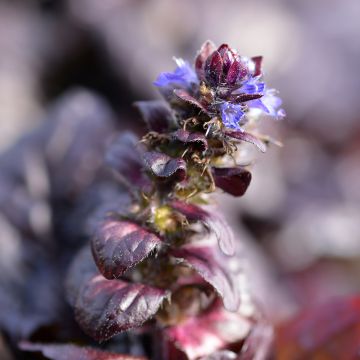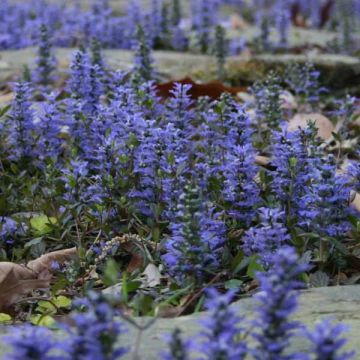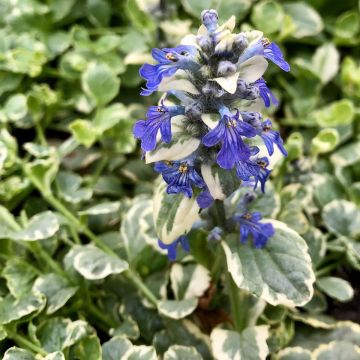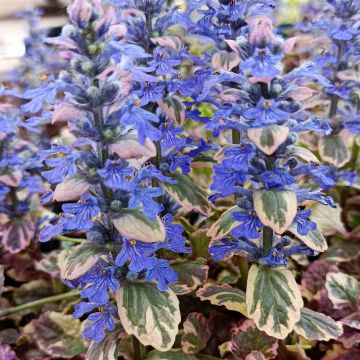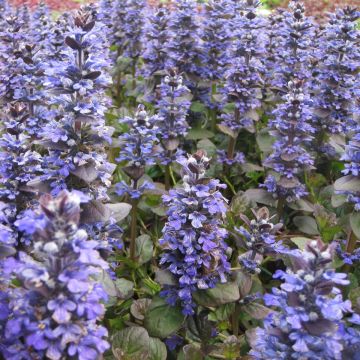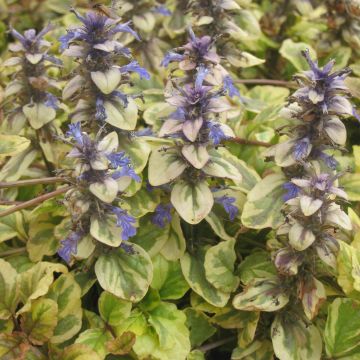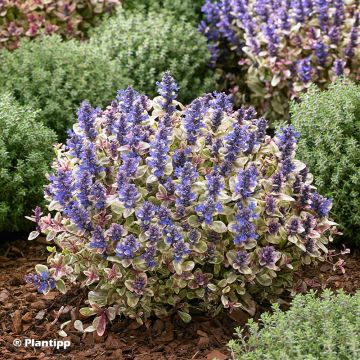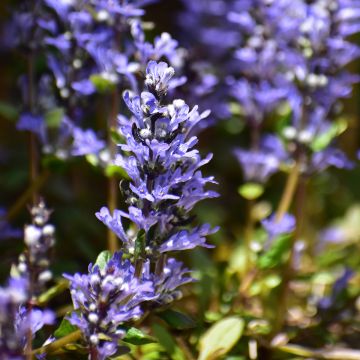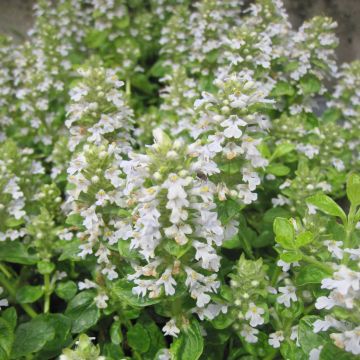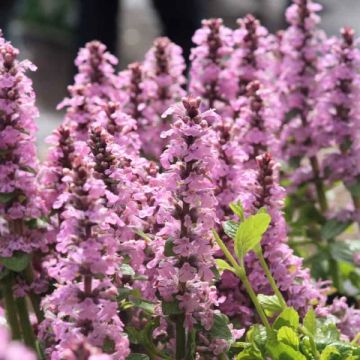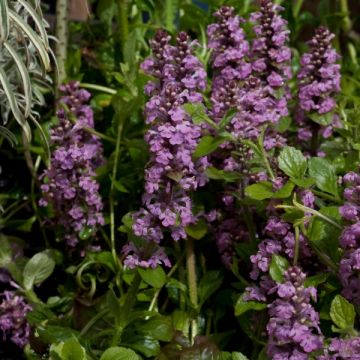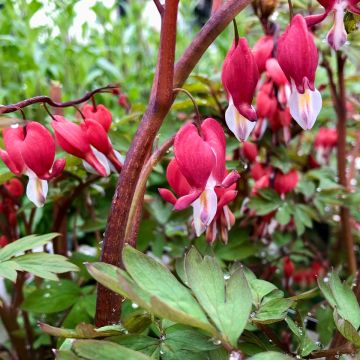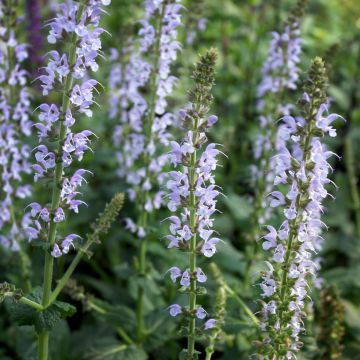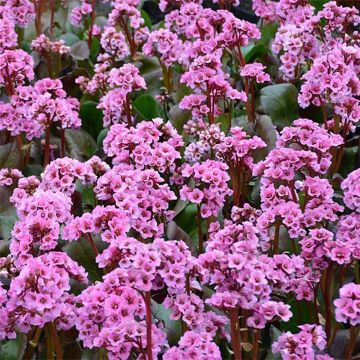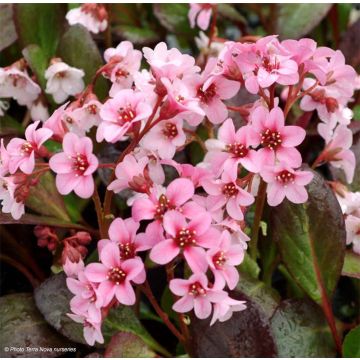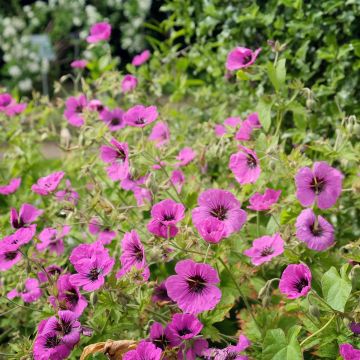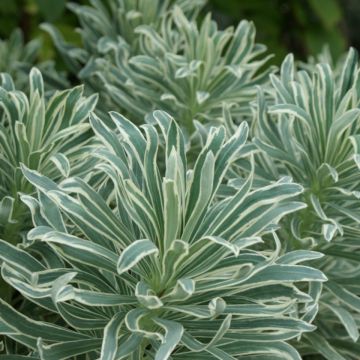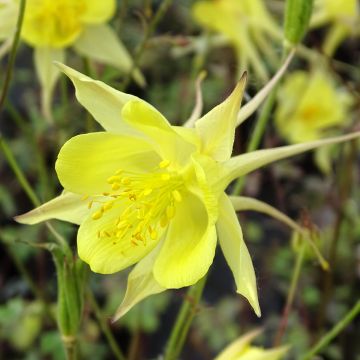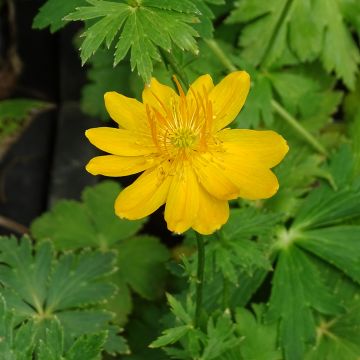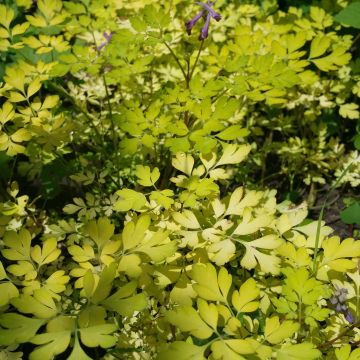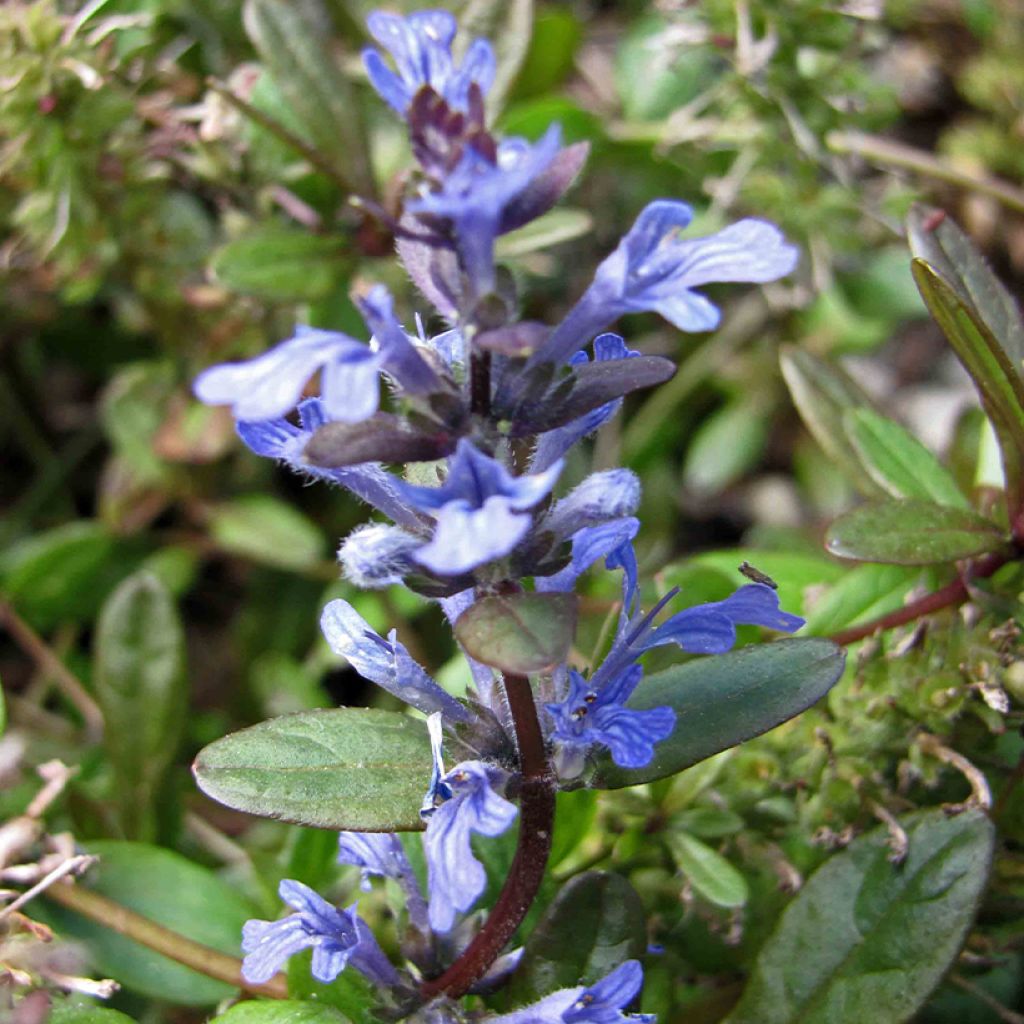

Ajuga tenorei - Bugle
Ajuga tenorei - Tenore's Bugle
Ajuga tenorei
Tenore's Bugle
Why not try an alternative variety in stock?
View all →This plant carries a 12 months recovery warranty
More information
We guarantee the quality of our plants for a full growing cycle, and will replace at our expense any plant that fails to recover under normal climatic and planting conditions.
From €5.90 for pickup delivery and €6.90 for home delivery
Express home delivery from €8.90.
Does this plant fit my garden?
Set up your Plantfit profile →
Description
Ajuga tenorei is a botanical species of creeping bush from which several renowned cultivars originate. Its growth is compact, its foliage persists in winter, and its generous spring flowering is a very bright royal blue. This perennial forms loosely spreading clumps of numerous small, narrow, green leaves that become more or less purple in winter. Perfect in slightly wild areas of the garden or in pots and containers, this bugle prefers shade, partial shade, or gentle sunlight, in moist soil. A lovely low-maintenance plant!
Ajuga tenorei is native to central and southern Italy, as well as Sicily and only found in the wild there. This perennial plant belongs to the family of Lamiaceae, just like sage and mint. It is the botanical species from which the famous cultivars 'Chocolate Chip' and 'Princess Nadia' originate. It grows slower than Ajuga reptans, and is never invasive. It forms 5 to 15 cm (2 to 6in) tall clumps of small leaves that are different from Ajuga reptans. They are oval and elongated, fuzzy and sometimes slightly purple, with a diameter not exceeding 1.3 cm (1in). The plant produces weak stoloniferous stems that root on their own, allowing it to eventually form a cushion about 30-40 cm (12-16in) in diameter. From May to June, small intensely royal blue two-lipped flowers appear just above the foliage and bloom for more than a month.
Ajuga tenorei can be planted along the edge of flower beds or paths, between stones in fresh rockeries, in flower beds, or even in pots and containers to decorate balconies or terraces. In partial shade, it pairs well with the colourful foliage of heucheras or tiarellas, for example. Bugles are among the best ground cover plants; they are perfect for dressing the base of trees and bushes, in pots or shaded flower beds with spring bulbs, dead nettles, and barrenworts. In moist rockeries, they can be planted alongside buckthorns, Azorella trifurcata 'Nana', and saxifrages.
Report an error about the product description
Flowering
Foliage
Plant habit
Botanical data
Ajuga
tenorei
Lamiaceae
Tenore's Bugle
Southern Europe
Other Ajuga
Planting and care
Ajuga tenorei, also known as RNA is undemanding of soil type but does not tolerate prolonged drought well. It prefers shade or partial shade in humus-rich soil, even slightly clayey, that does not dry out too much in summer. It can be planted all year round in shaded areas and moist soil. It is very easy to grow and can withstand any type of terrain, from the poorest to the richest. Beware of slugs and remove faded flowers by mowing in summer, this will thicken the plant and prevent it from thinning out in the centre. If necessary, limit its spread by removing excess shoots in late winter or autumn.
Planting period
Intended location
Care
This item has not been reviewed yet - be the first to leave a review about it.
Spring flowering perennials
Haven't found what you were looking for?
Hardiness is the lowest winter temperature a plant can endure without suffering serious damage or even dying. However, hardiness is affected by location (a sheltered area, such as a patio), protection (winter cover) and soil type (hardiness is improved by well-drained soil).

Photo Sharing Terms & Conditions
In order to encourage gardeners to interact and share their experiences, Promesse de fleurs offers various media enabling content to be uploaded onto its Site - in particular via the ‘Photo sharing’ module.
The User agrees to refrain from:
- Posting any content that is illegal, prejudicial, insulting, racist, inciteful to hatred, revisionist, contrary to public decency, that infringes on privacy or on the privacy rights of third parties, in particular the publicity rights of persons and goods, intellectual property rights, or the right to privacy.
- Submitting content on behalf of a third party;
- Impersonate the identity of a third party and/or publish any personal information about a third party;
In general, the User undertakes to refrain from any unethical behaviour.
All Content (in particular text, comments, files, images, photos, videos, creative works, etc.), which may be subject to property or intellectual property rights, image or other private rights, shall remain the property of the User, subject to the limited rights granted by the terms of the licence granted by Promesse de fleurs as stated below. Users are at liberty to publish or not to publish such Content on the Site, notably via the ‘Photo Sharing’ facility, and accept that this Content shall be made public and freely accessible, notably on the Internet.
Users further acknowledge, undertake to have ,and guarantee that they hold all necessary rights and permissions to publish such material on the Site, in particular with regard to the legislation in force pertaining to any privacy, property, intellectual property, image, or contractual rights, or rights of any other nature. By publishing such Content on the Site, Users acknowledge accepting full liability as publishers of the Content within the meaning of the law, and grant Promesse de fleurs, free of charge, an inclusive, worldwide licence for the said Content for the entire duration of its publication, including all reproduction, representation, up/downloading, displaying, performing, transmission, and storage rights.
Users also grant permission for their name to be linked to the Content and accept that this link may not always be made available.
By engaging in posting material, Users consent to their Content becoming automatically accessible on the Internet, in particular on other sites and/or blogs and/or web pages of the Promesse de fleurs site, including in particular social pages and the Promesse de fleurs catalogue.
Users may secure the removal of entrusted content free of charge by issuing a simple request via our contact form.
The flowering period indicated on our website applies to countries and regions located in USDA zone 8 (France, the United Kingdom, Ireland, the Netherlands, etc.)
It will vary according to where you live:
- In zones 9 to 10 (Italy, Spain, Greece, etc.), flowering will occur about 2 to 4 weeks earlier.
- In zones 6 to 7 (Germany, Poland, Slovenia, and lower mountainous regions), flowering will be delayed by 2 to 3 weeks.
- In zone 5 (Central Europe, Scandinavia), blooming will be delayed by 3 to 5 weeks.
In temperate climates, pruning of spring-flowering shrubs (forsythia, spireas, etc.) should be done just after flowering.
Pruning of summer-flowering shrubs (Indian Lilac, Perovskia, etc.) can be done in winter or spring.
In cold regions as well as with frost-sensitive plants, avoid pruning too early when severe frosts may still occur.
The planting period indicated on our website applies to countries and regions located in USDA zone 8 (France, United Kingdom, Ireland, Netherlands).
It will vary according to where you live:
- In Mediterranean zones (Marseille, Madrid, Milan, etc.), autumn and winter are the best planting periods.
- In continental zones (Strasbourg, Munich, Vienna, etc.), delay planting by 2 to 3 weeks in spring and bring it forward by 2 to 4 weeks in autumn.
- In mountainous regions (the Alps, Pyrenees, Carpathians, etc.), it is best to plant in late spring (May-June) or late summer (August-September).
The harvesting period indicated on our website applies to countries and regions in USDA zone 8 (France, England, Ireland, the Netherlands).
In colder areas (Scandinavia, Poland, Austria...) fruit and vegetable harvests are likely to be delayed by 3-4 weeks.
In warmer areas (Italy, Spain, Greece, etc.), harvesting will probably take place earlier, depending on weather conditions.
The sowing periods indicated on our website apply to countries and regions within USDA Zone 8 (France, UK, Ireland, Netherlands).
In colder areas (Scandinavia, Poland, Austria...), delay any outdoor sowing by 3-4 weeks, or sow under glass.
In warmer climes (Italy, Spain, Greece, etc.), bring outdoor sowing forward by a few weeks.

































